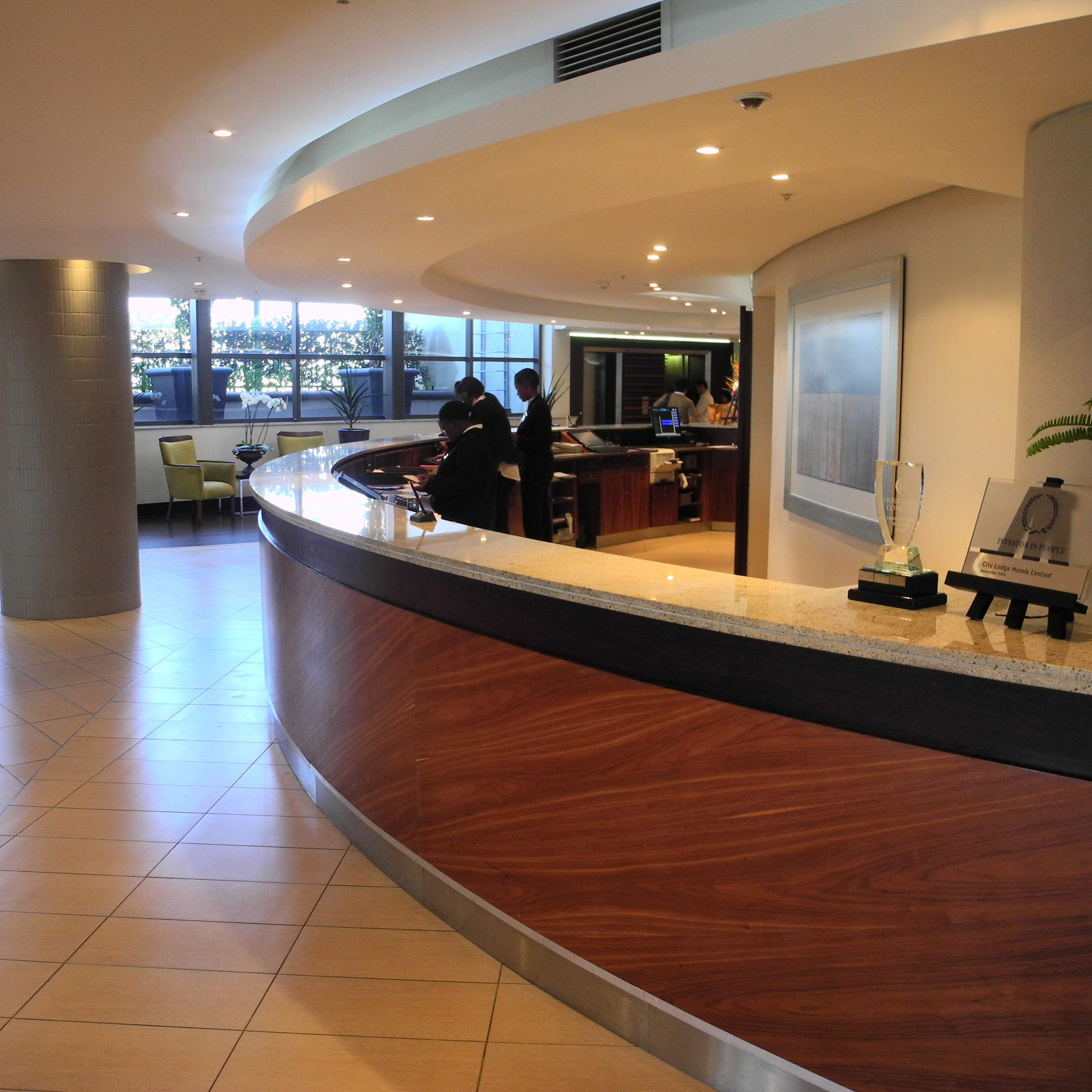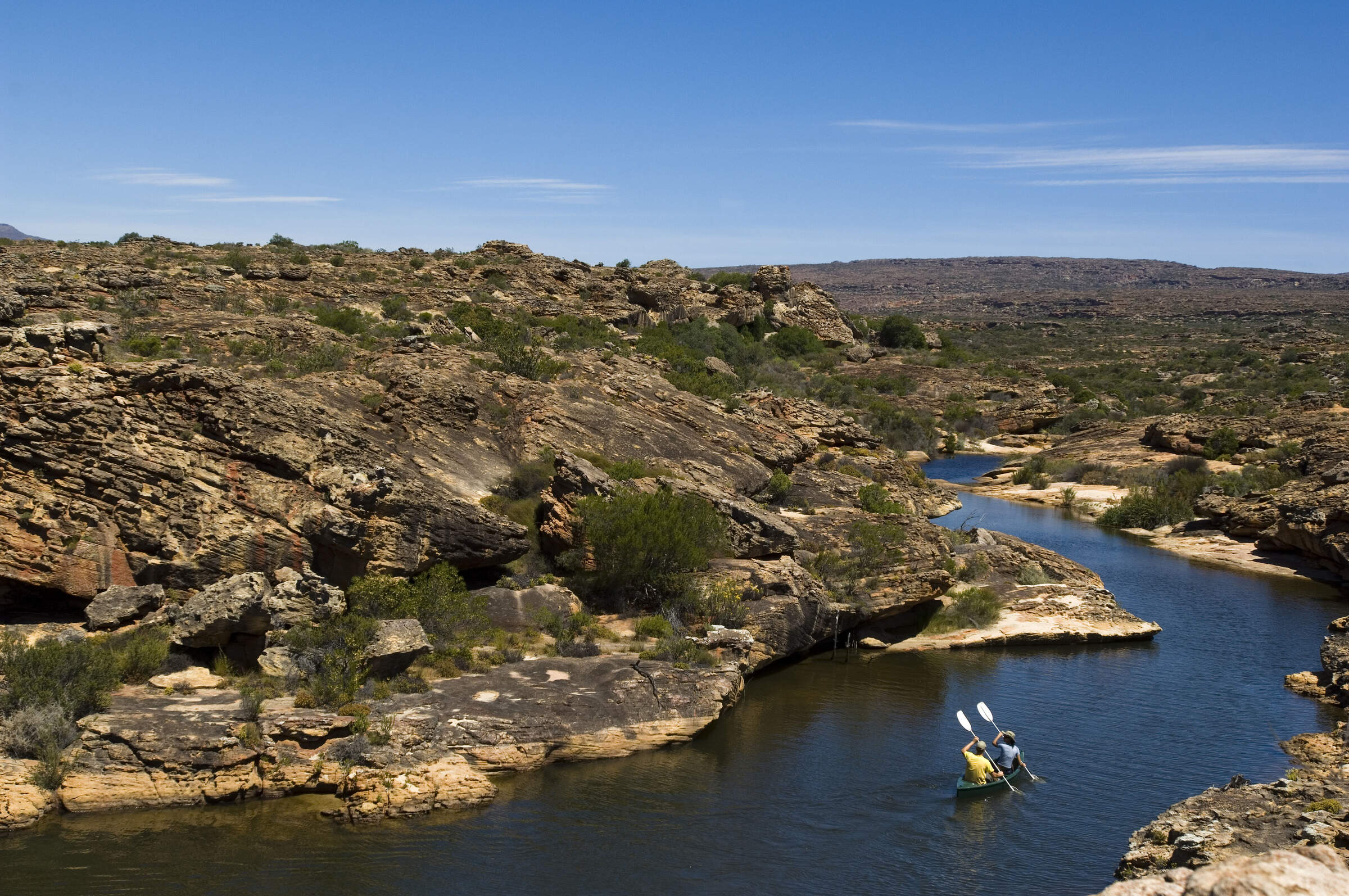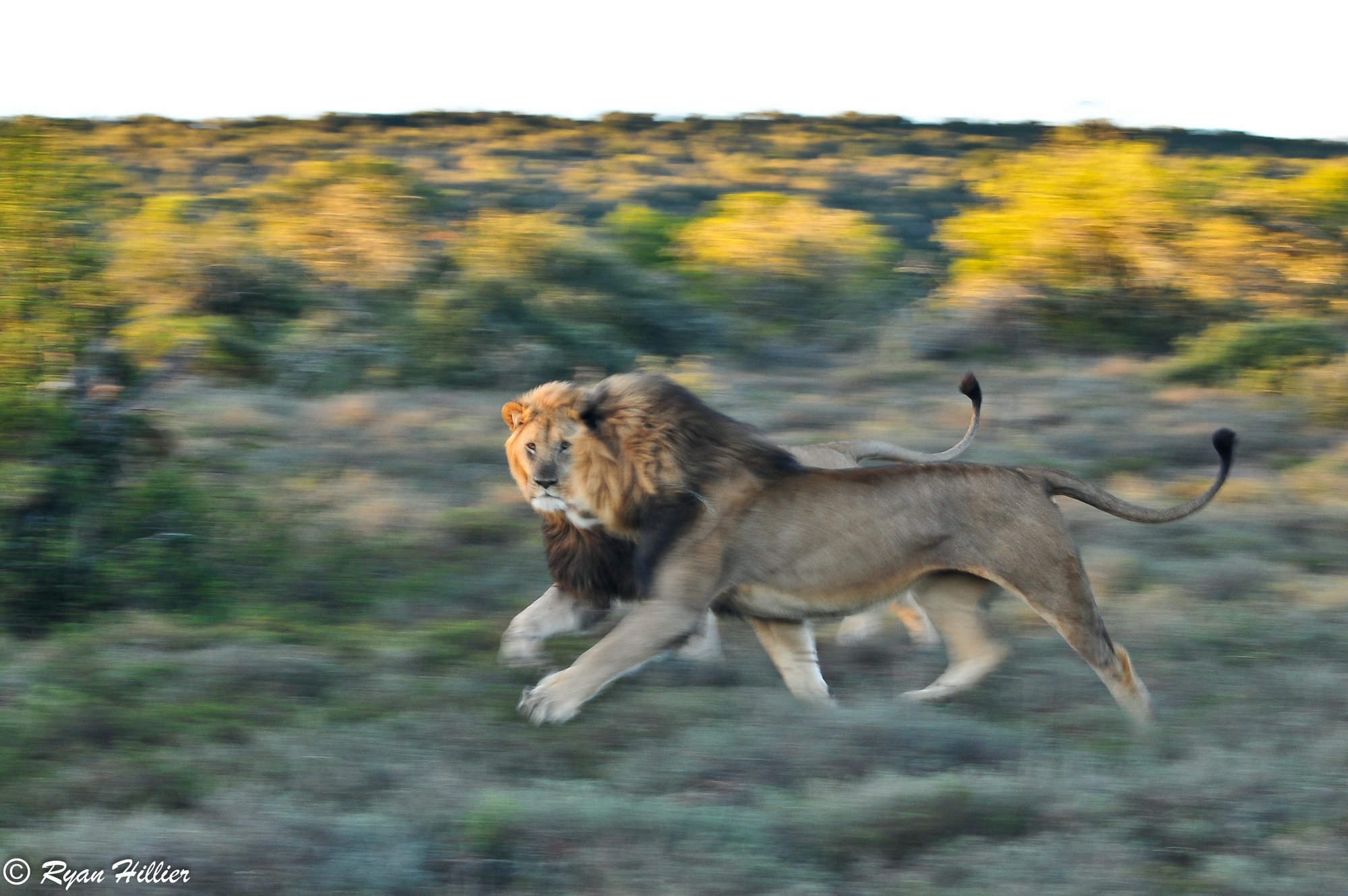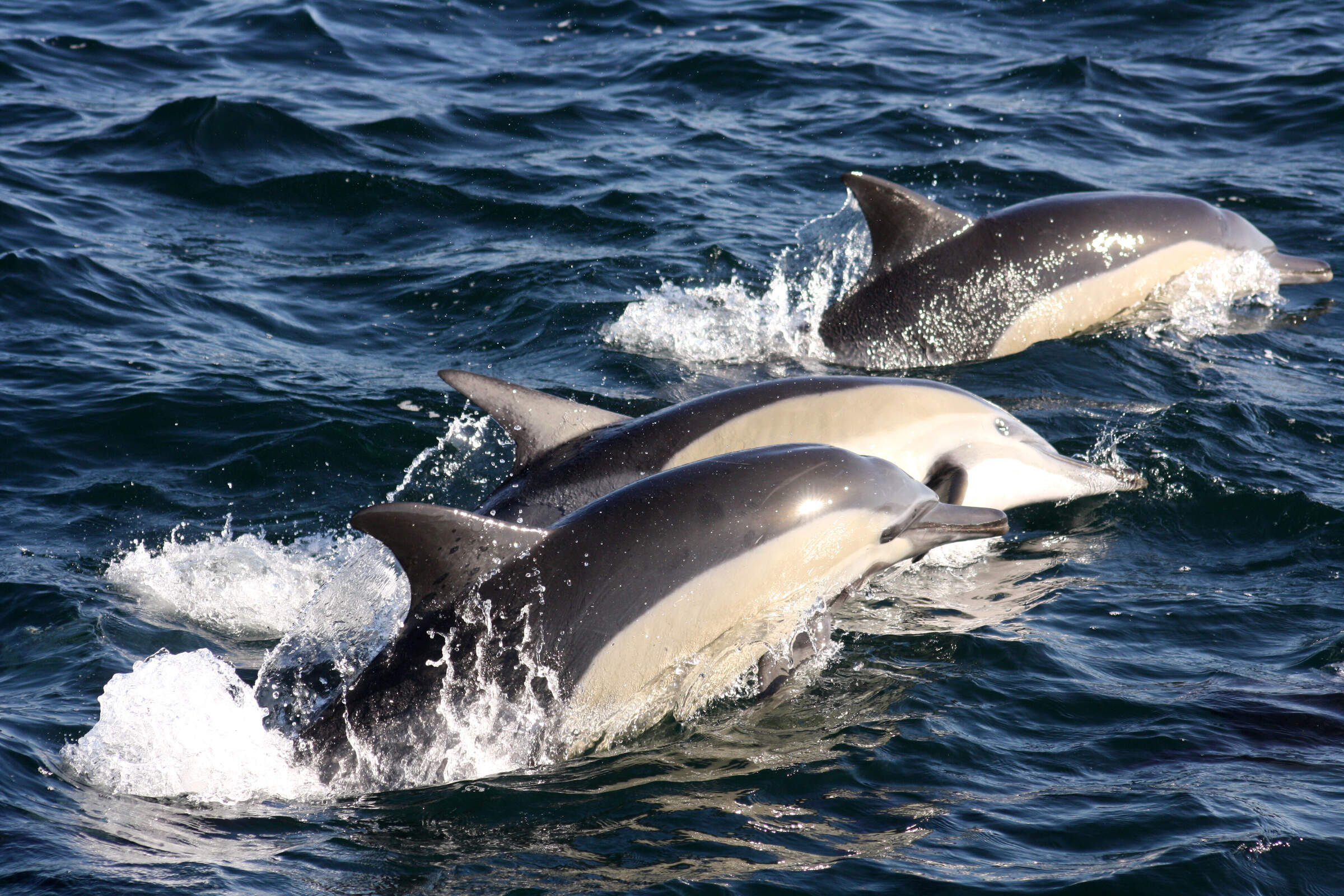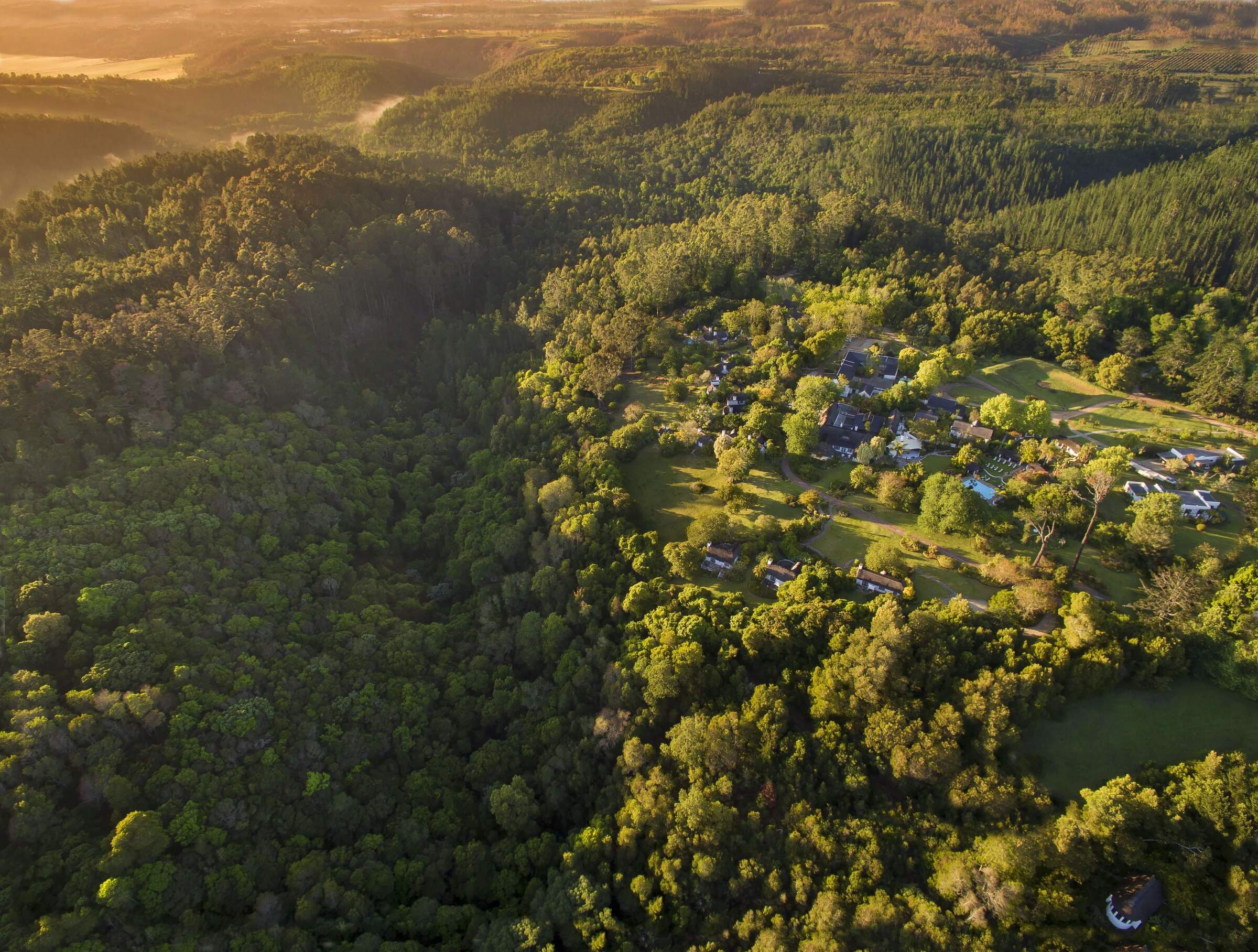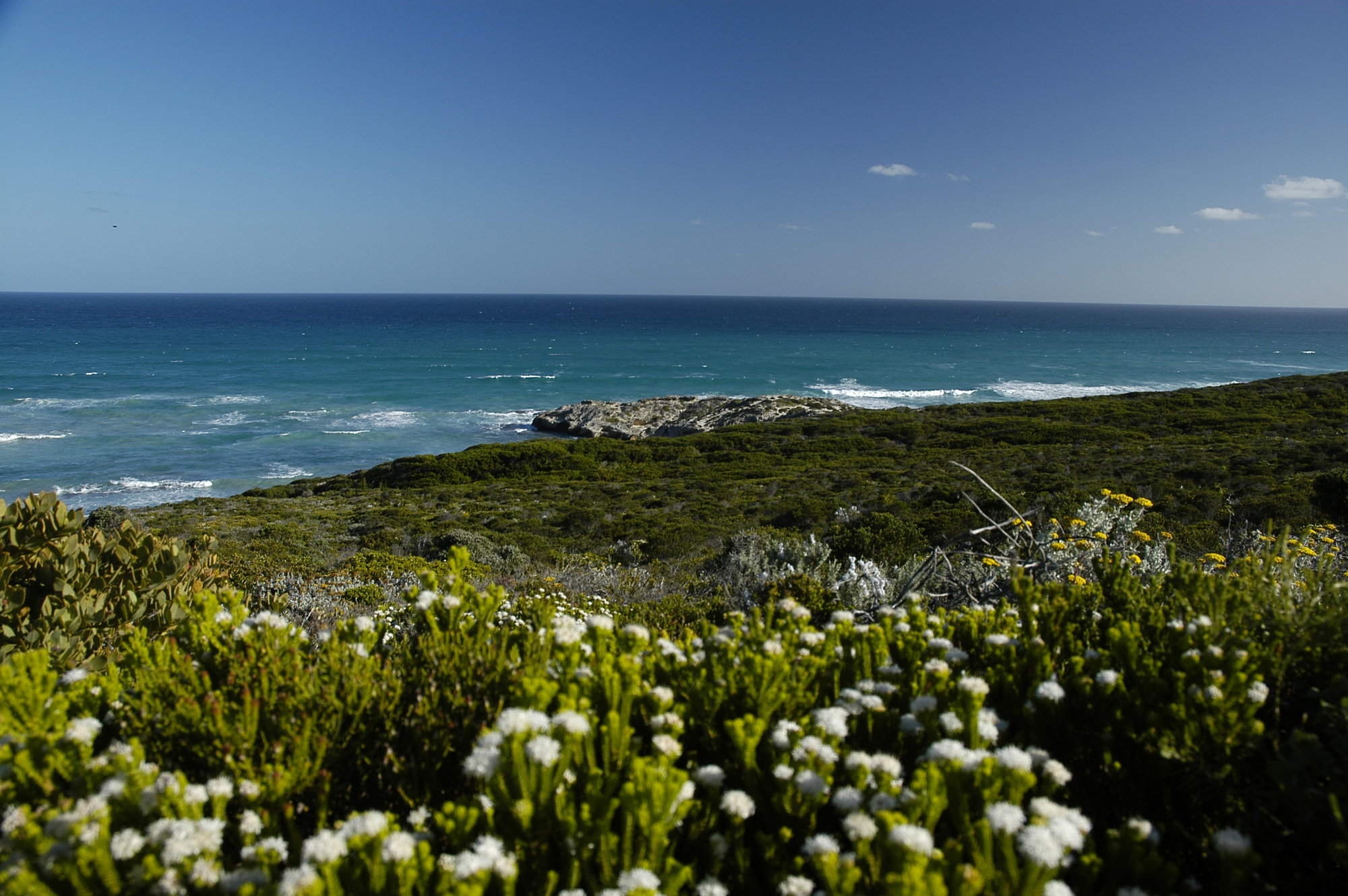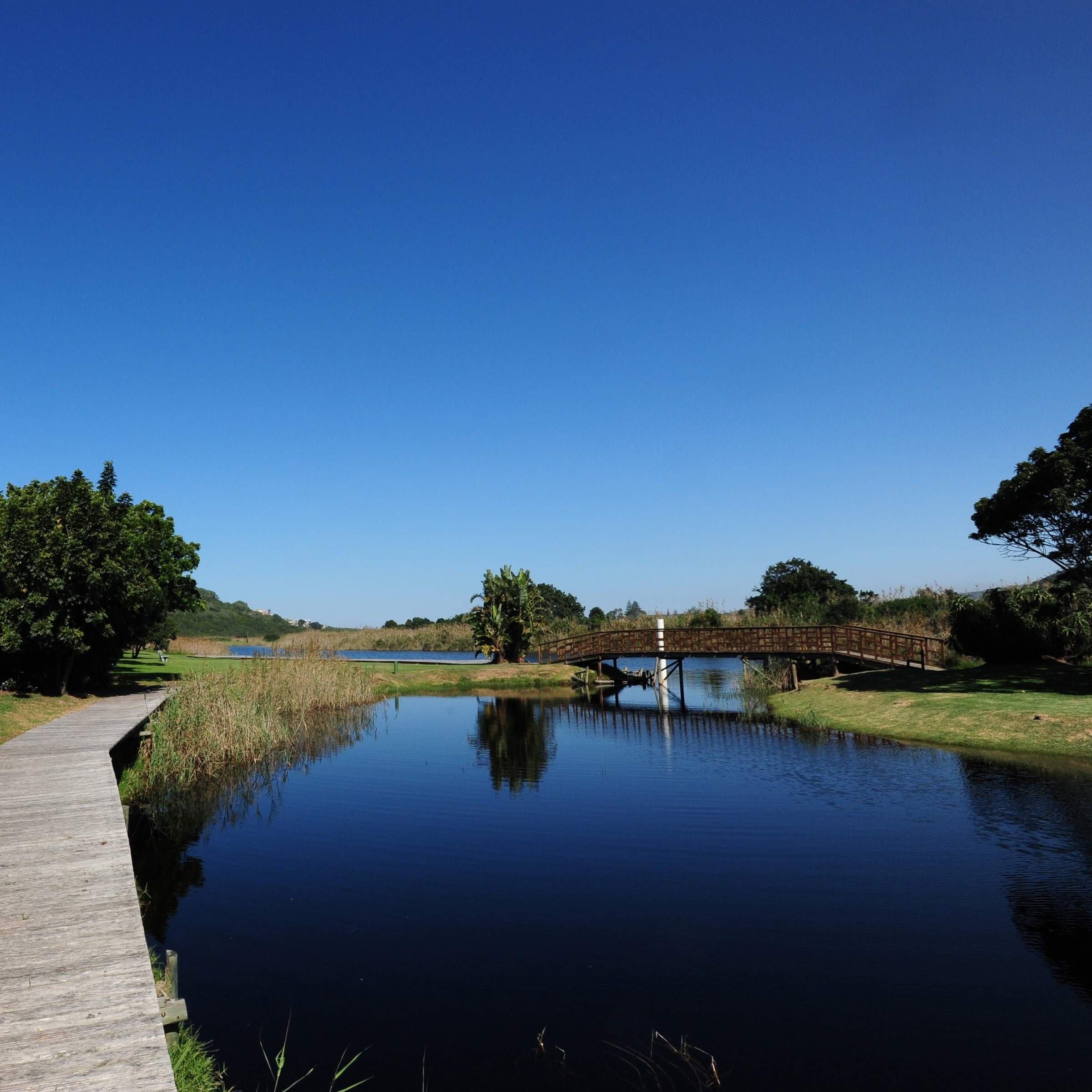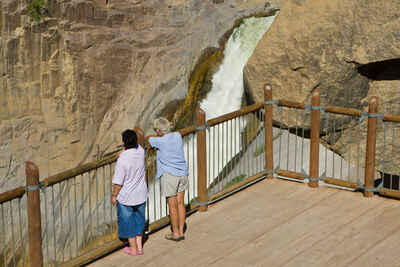
It is called ‘Place of Great Noise’ which fits the park well if the river is in full flood.
Augrabies Falls National Park
Augrabies Falls National Park
Ruggedly beautiful, Augrabies is an otherworldly desert of rocky terrain, immense granite ‘whalebacks’ and tumbling waterfalls.
In a remote area of the Northern Cape, Augrabies Falls was proclaimed a national park in 1966. Covering 500km², it is the staggering power of the water at its heart that gives the park its name. ‘Aukoerebis’ in the Nama language of the local Khoi people means 'Place of Great Noise', a reference to the deafening sound of the river in full flood. And the waterfalls plunging dramatically into the 500-million-year-old gorge of the Orange River are indeed a spectacular sight.
Excellent boardwalk trails lead over the granite landscape, past speeding tributaries and powerful falls to the deeply incised gorge and the calm sweep of the wide, slow-flowing river as it continues its journey. One of the great pleasures of a stay here is the wilderness walking. A series of trails, from intense multi-day treks to short, invigorating rambles are a joy. Far from the madding crowd, this quiet park is a chance to roam freely, breathe deeply and slow down in a starkly scenic setting.
The burnt-orange moonscape is punctuated with incredible slices of weathered rock and giant granite hills. Clambering over these gently sloping ancient rocks, dotted with aloes, tufts of pale grasses and prized open by hardy Namaqua figs, you’ll be in the company of scuttling rock dassies, iridescent, endemic lizards and sure-footed pairs of klipspringer antelope. Views are stunning, with photographers drawn to the striking silhouettes of the spiky Kokerboom trees in the rosy sunset glow, and wildlife enthusiasts enthralled by the area’s pale giraffes, Hartmann's mountain zebra, caracals and African wildcats. Playful Cape clawless otters and stooping peregrine falcons.
Couple the striking landscape, quirky wildlife and panoramic vistas with good-value, rustic cabins and Augrabies Falls is a great addition to a self-drive journey to theKgalagadi Transfrontier Park or the Cederberg Mountains and Cape Town. It’s a thoroughly peaceful, restorative spot with excellent opportunities for independent, on-the-ground exploration.

South Africa trips focusing on the Cape
Here are 9 great South Africa trips to inspire you
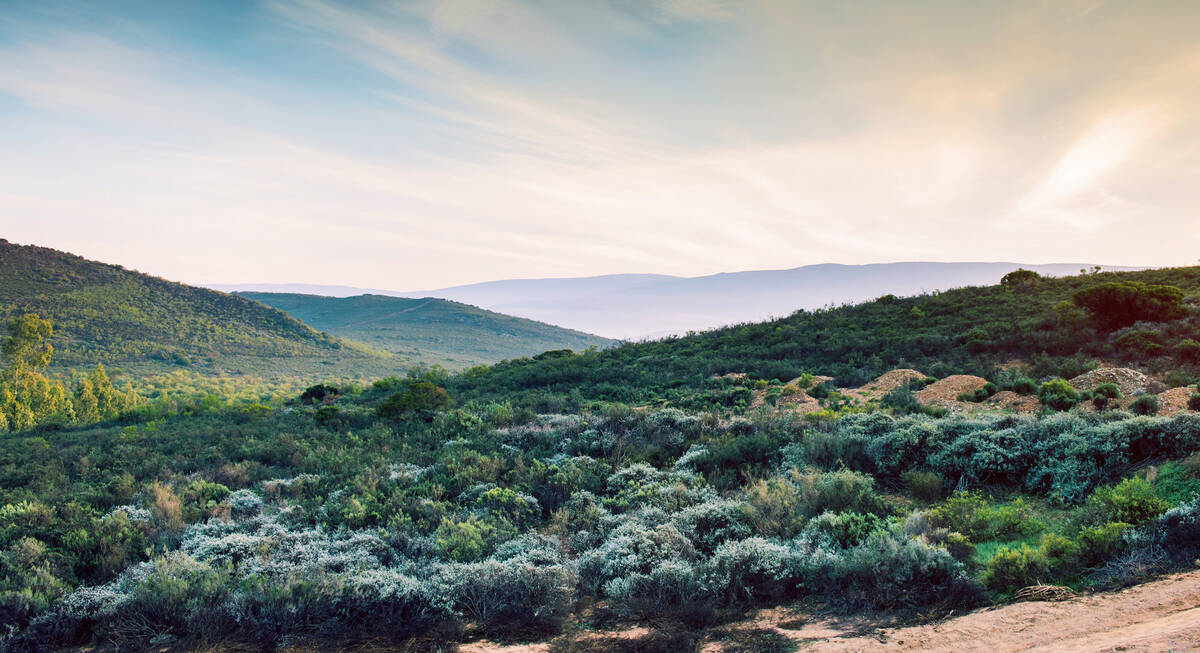
Cape Genet Self-drive Safari
20 days • 8 locations
CAPE TOWN AIRPORT TO CAPE TOWN AIRPORT
Enjoy fine-dining in Cape Town, whale-watching in Hermanus, and a range of walking and water-based activities throughout De Hoop’s Nature Reserve, the Klein Karoo and Plettenberg. This relaxed self-driven safari concludes with stays in The Winelands and Namaqualand.
US$3,630 - US$4,340 per person
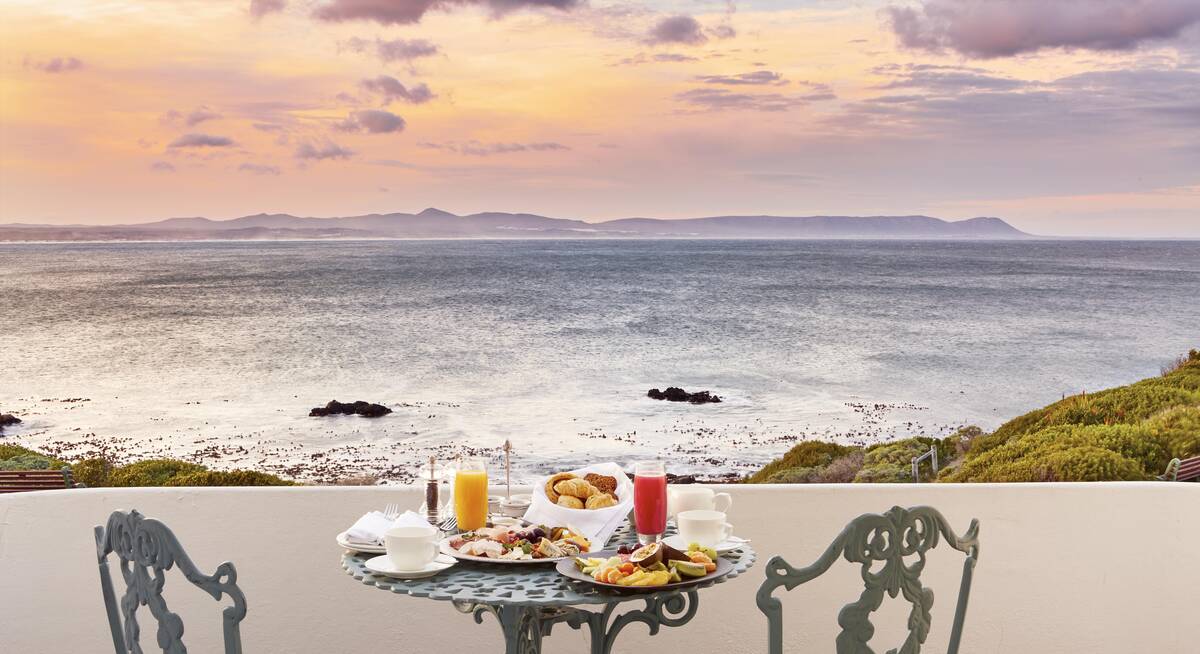
Cape Grysbok Self-drive Safari
20 days • 8 locations
CAPE TOWN AIRPORT TO CAPE TOWN AIRPORT
Explore Cape Town, Hermanus, Franschhoek and Namaqualand, amongst other memorable destinations, during this leisurely self-driven safari. Fine dining, varied activities and impressively comfortable lodges, estates and country houses await.
US$4,780 - US$7,200 per person
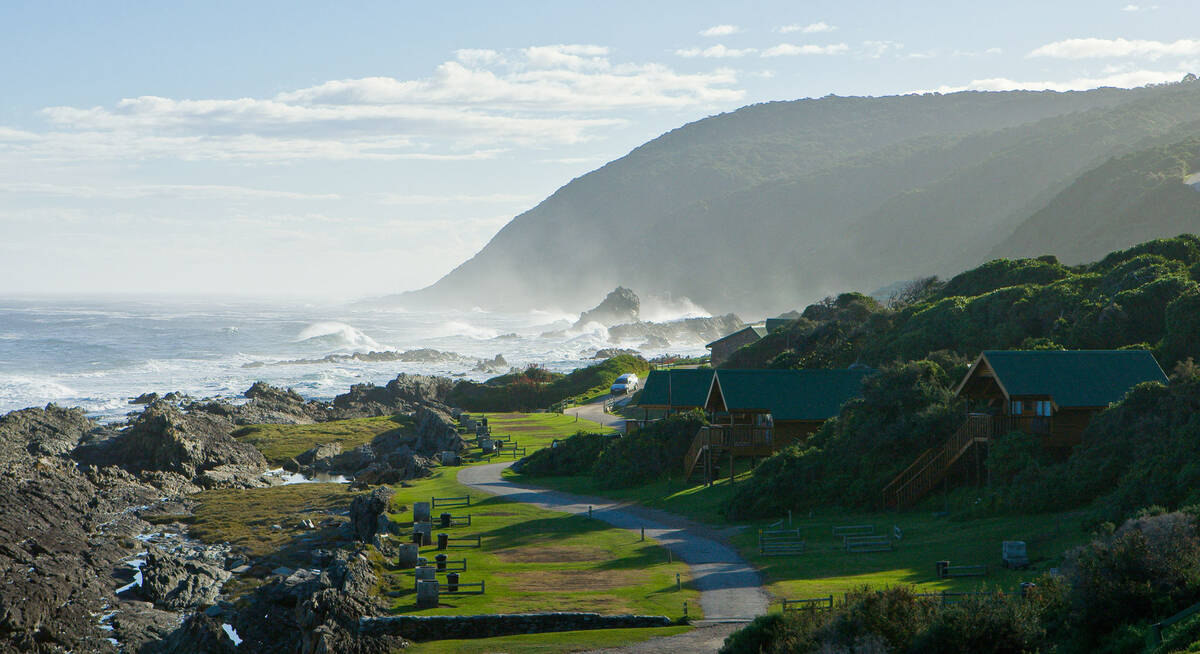
Bontebok Self-drive Safari
12 days • 5 locations
CAPE TOWN AIRPORT TO PORT ELIZABETH AIRPORT
This varied and great-value self-drive trip visits Cape Town, the Winelands and diverse sections of the Garden Route, staying at great places with real local character. It’s ideal for active couples and families who want to explore the Cape’s stunning locations.
US$1,790 - US$1,930 per person
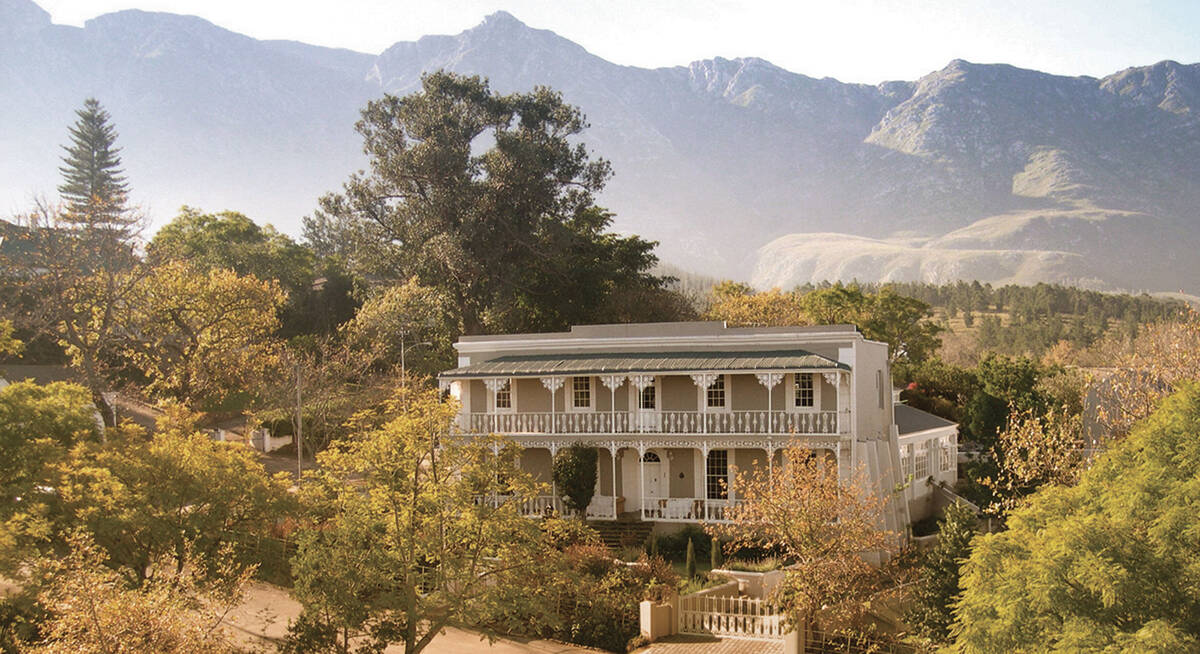
Waterbuck self-drive
12 days • 6 locations
CAPE TOWN AIRPORT TO PORT ELIZABETH AIRPORT
A classic Cape and Garden Route self-drive taken at a leisurely pace and staying in charming boutique hotels. Great food and wine paired with spectacular scenery and an exciting array of activities.
US$2,960 - US$3,280 per person
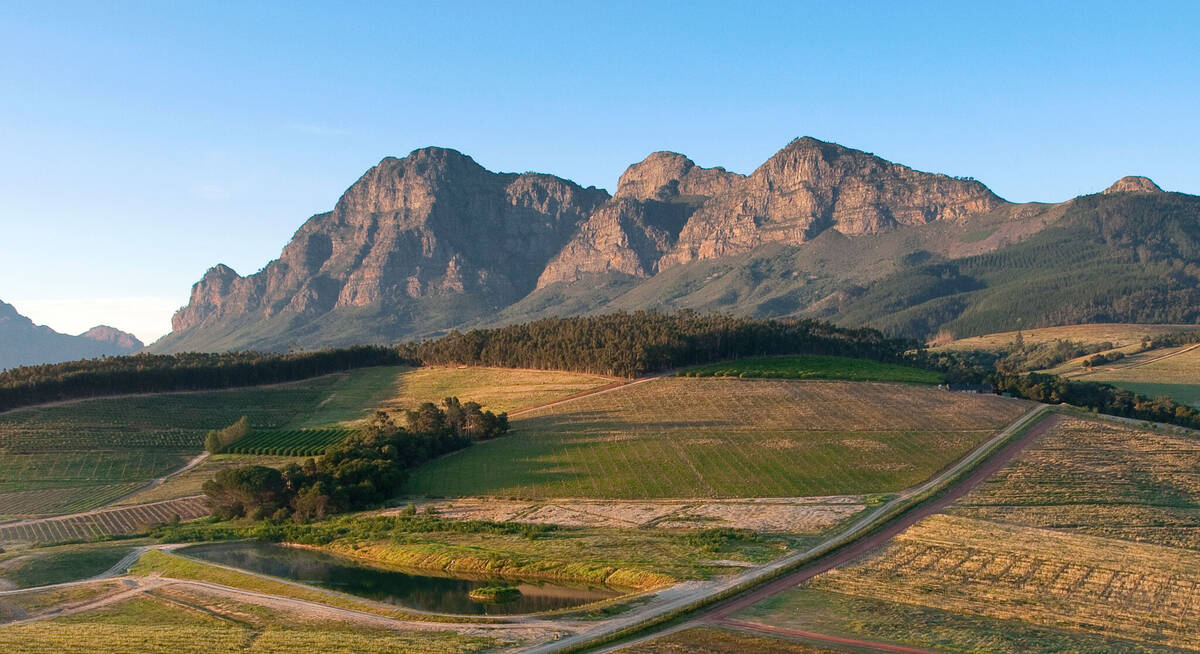
Cape Mountain Zebra Self-drive Safari
12 days • 4 locations
CAPE TOWN AIRPORT TO CAPE TOWN AIRPORT
Fine dining, luxurious accommodation and a wide of range of leisurely activities make this a superbly comfortable self-driven safari. Visit the cosmopolitan Cape Town, tranquil coastal retreats, stylish wine farms and spectacularly peaceful nature reserves.
US$4,500 - US$6,960 per person
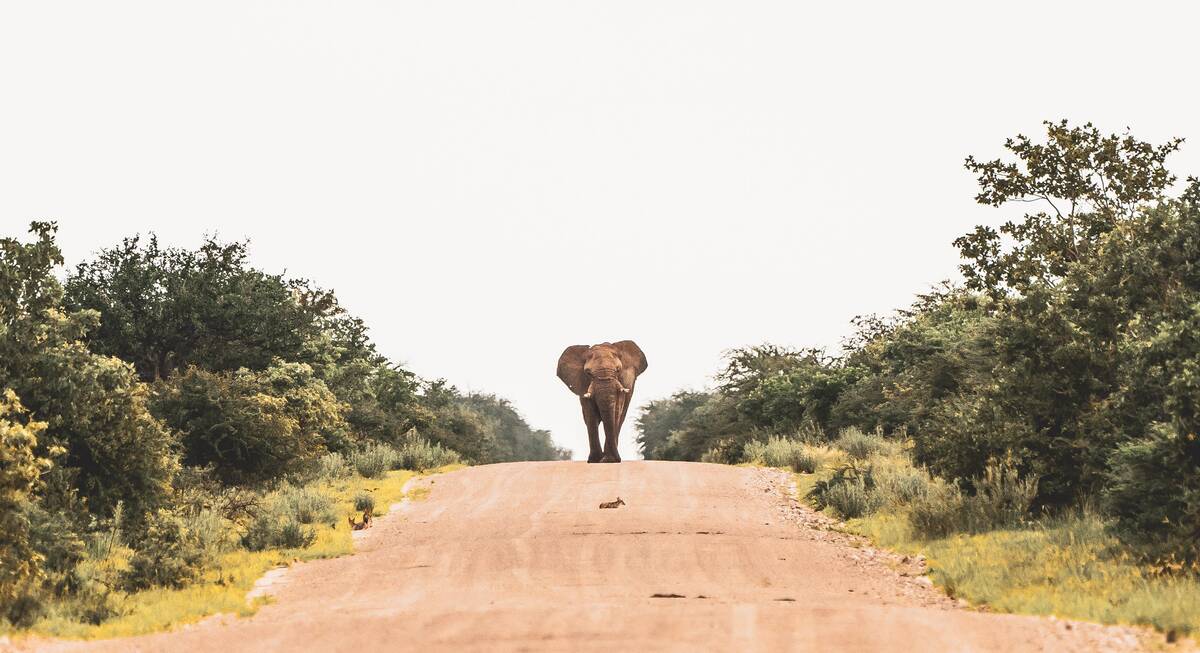
Black Wildebeest Self-drive Safari
19 days • 10 locations
CAPE TOWN AIRPORT TO WINDHOEK AIRPORT
Journey from South Africa’s cosmopolitan Cape Town to central Namibia’s Okonjima Nature Reserve during this self-driven safari. The route passes through a stunning variety of landscapes, offering access to this beautiful continent’s rich diversity.
US$4,110 - US$4,220 per person
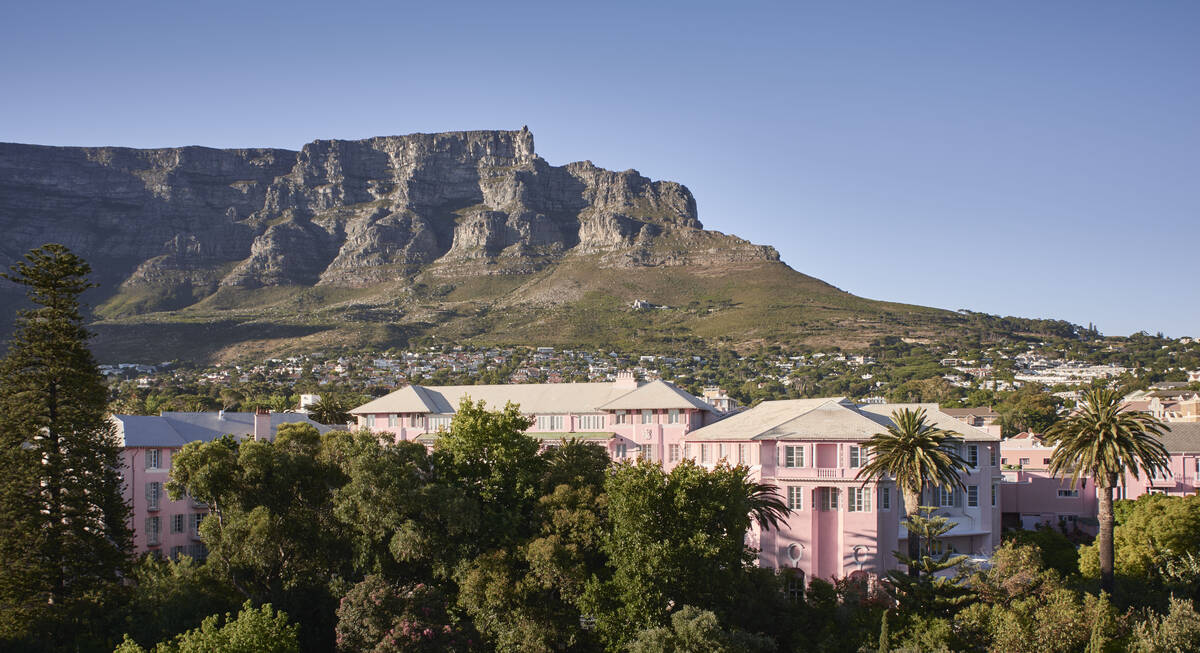
The Highlights of Africa
17 days • 7 locations
CAPE TOWN AIRPORT TO KIGALI AIRPORT
An epic adventure taking in some of Africa’s most incredible sights and wildlife experiences, from Cape Town to the Okavango Delta, Victoria Falls, the Maasai Mara and an encounter with mountain gorillas.
US$16,230 - US$19,630 per person
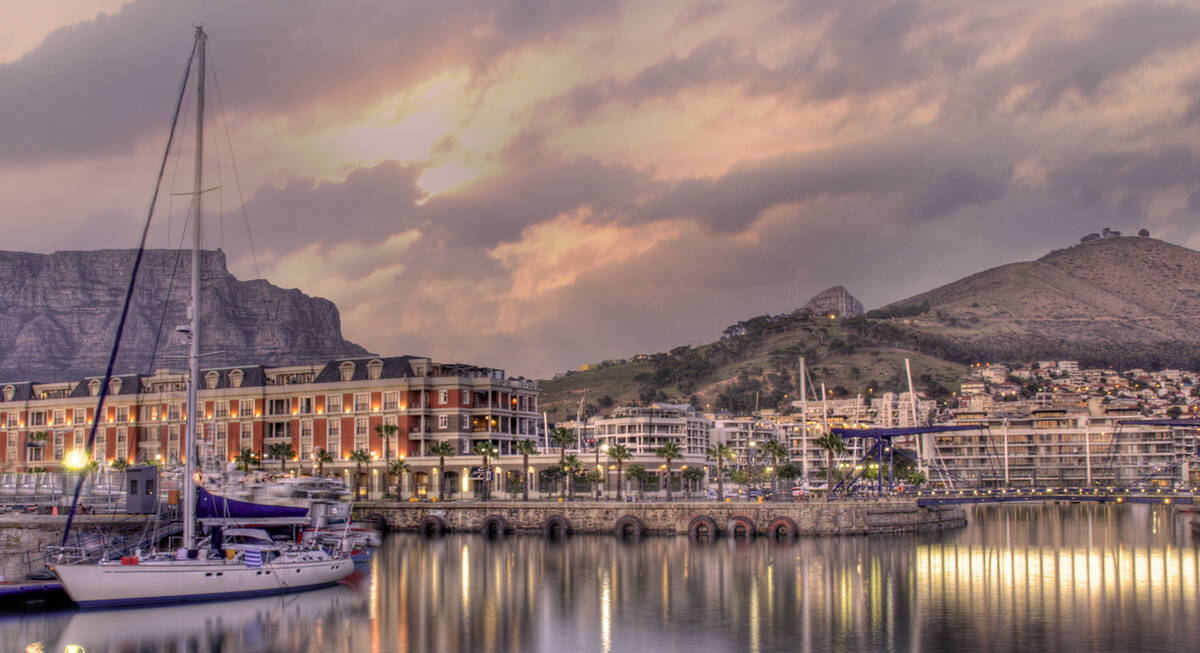
Leopard Safari
13 days • 4 locations
VICTORIA FALLS AIRPORT TO CAPE TOWN AIRPORT
Victoria Falls, Botswana and Cape Town – a classic southern African itinerary combining luxury, wilderness, safari and culture. We can't think of a better way to spend two weeks.
US$13,400 - US$17,960 per person
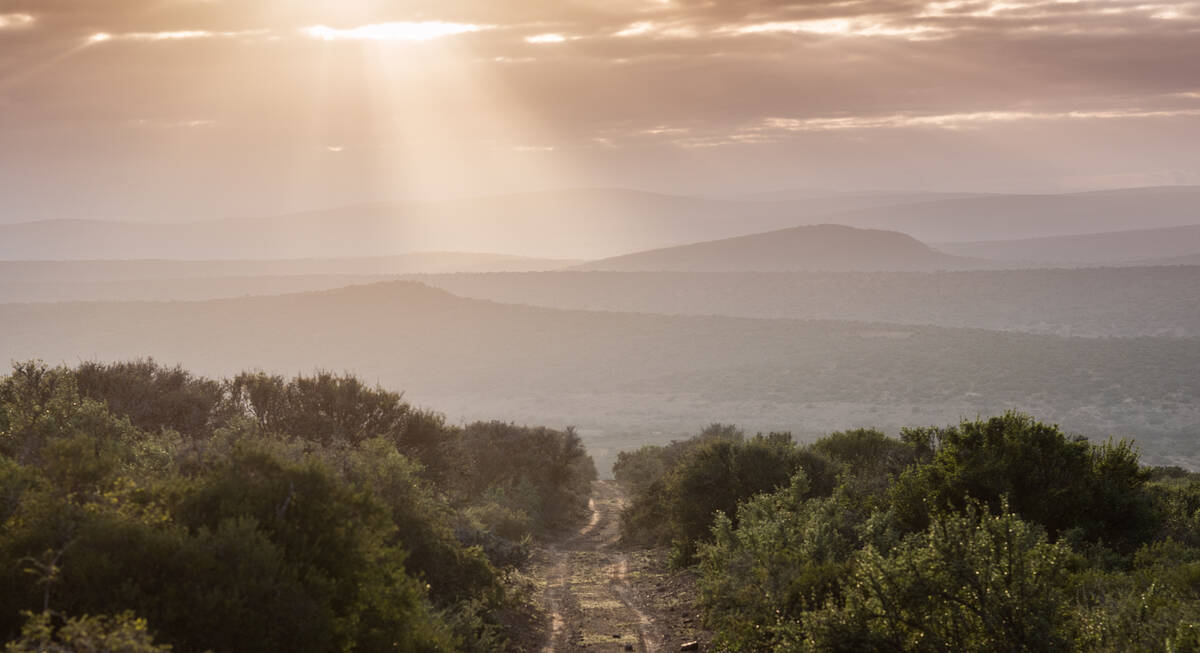
Kwandwe Self-drive Safari
3 days • 1 locations
PORT ELIZABETH AIRPORT TO PORT ELIZABETH AIRPORT
An elegantly stylish lodge that is well suited to families, Kwandwe offers a range of safari activities and the chance to sight all of the "Big 5" during exploration of the Eastern Cape.
US$3,110 - US$4,390 per person
Most recent reviews of our safaris to Augrabies Falls
Click below to browse all 36 reviews from Augrabies Falls National Park. All from our travellers; all are in full & unedited.
Arrived 4 Apr 2023, 20 nights
"My Apr 2023 trip"
Overall rating: Excellent
Arrived 25 Aug 2022, 24 nights
"My Aug 2022 trip"
Overall rating: Excellent
Arrived 4 Apr 2022, 17 nights
"My Apr 2022 trip"
Overall rating: Excellent
Arrived 26 Mar 2022, 14 nights
"My Mar 2022 trip"
Overall rating: Excellent
Arrived 8 Jul 2018, 9 nights
"Kgalagadi is the pure wilderness "
Overall rating: Excellent
Arrived 25 May 2018, 17 nights
"Kgalagadi"
Overall rating: Excellent
Arrived 4 Sep 2017, 23 nights
"Great road trip from Cape Town to Windhoek"
Overall rating: Excellent
Arrived 31 Aug 2017, 18 nights
"Our 2017 trip"
Overall rating: Excellent
Arrived 7 Jun 2017, 16 nights
"It turned out well in the end."
Overall rating: Excellent
Arrived 9 Sep 2016, 23 nights
"African Adventure 2016"
Overall rating: Excellent
Where to stay in Augrabies Falls
Our suggestions for safari camps in Augrabies Falls National Park
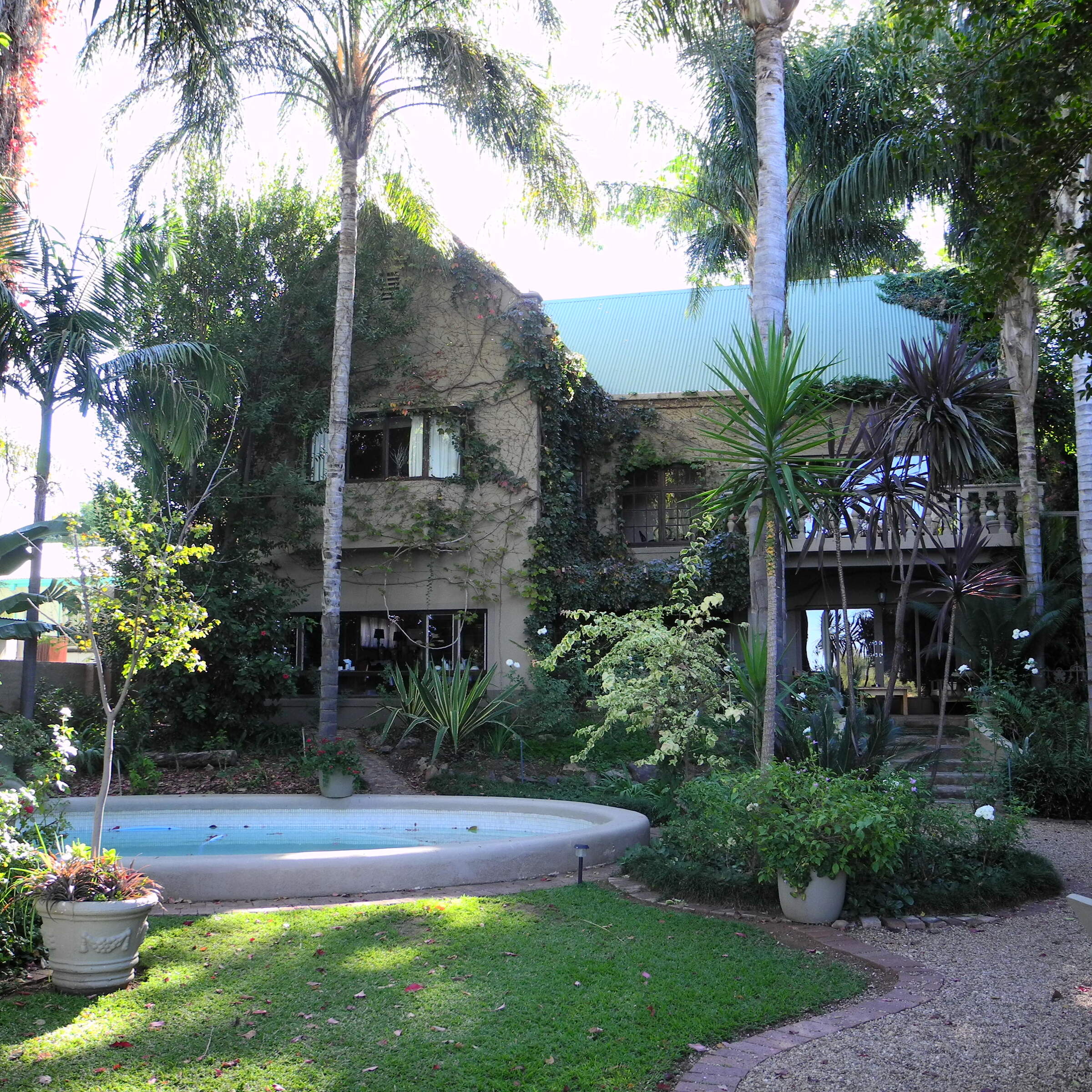
Le Must River Residence
Le Must River Residence has a pleasant feel and is a good choice for an overnight stay in Upington.
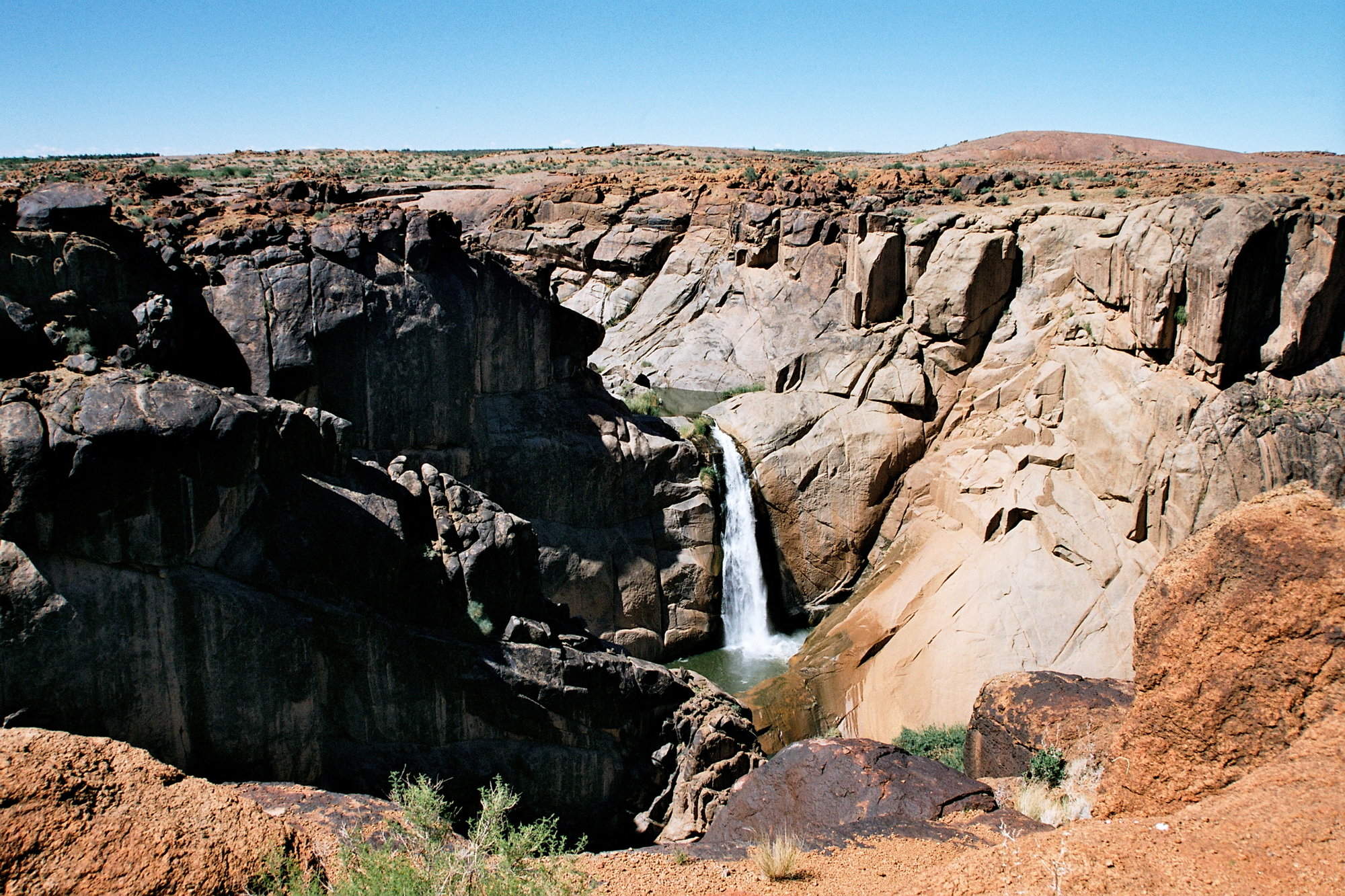
Augrabies Restcamp
The only accommodation in Augrabies Falls National Park, this restcamp offers self-catering accommodation with a restaurant. It is the perfect base from which to explore the park on foot or by car.
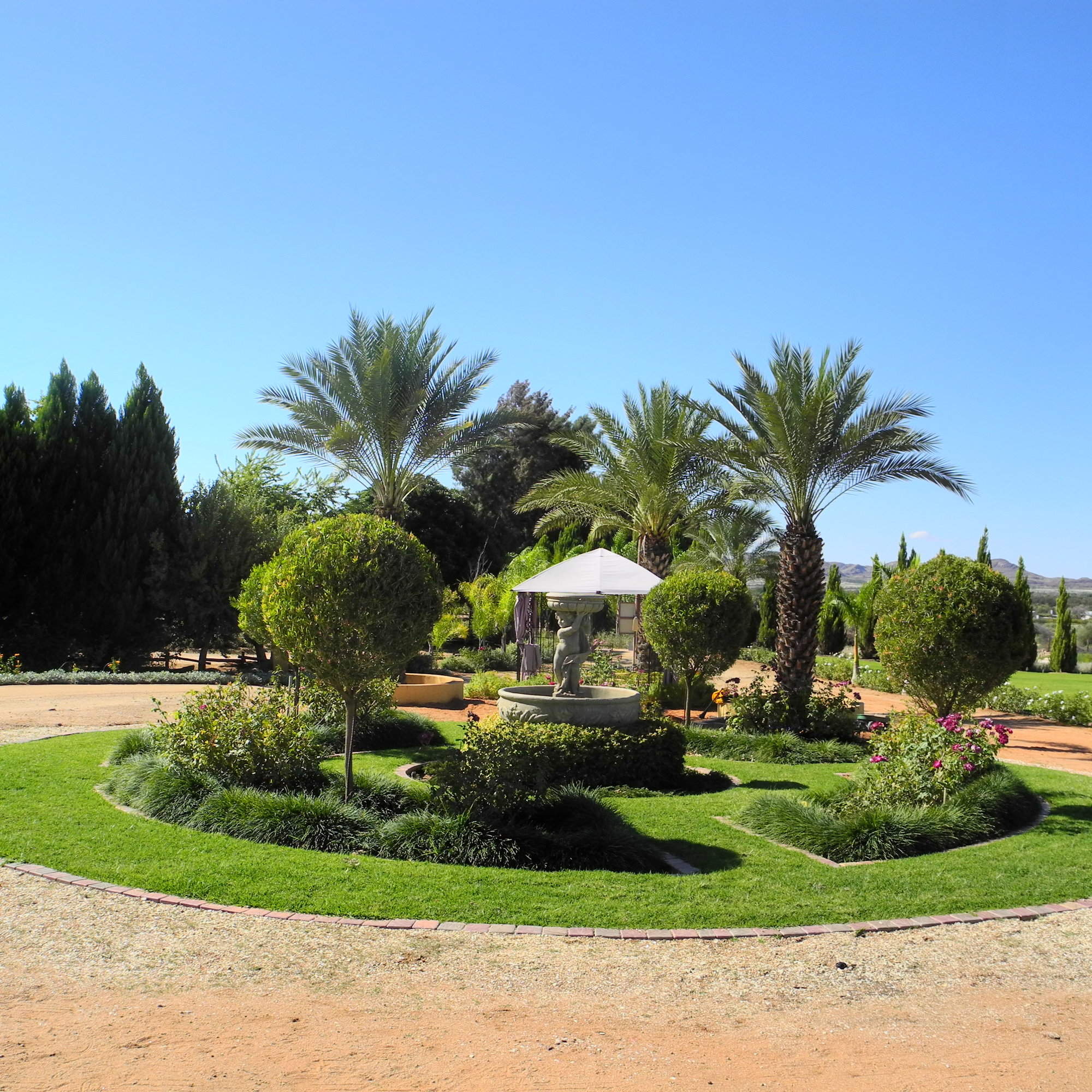
The Falls Guest House
The family run Falls Guest House offers a tranquil haven on the doorstep of Augrabies Falls NP.
Our travellers’ wildlife sightings in Augrabies Falls
This is their success for sightings in Augrabies Falls National Park. Click on a species for more detail. How we work this out.

100% success

0% success

0% success

0% success

0% success

0% success
When to go to Augrabies Falls National Park
Our month by month guide: What it's like to visit Augrabies Falls in South Africa
Jan
Feb
Mar
Apr
May
Jun
Jul
Aug
Sep
Oct
Nov
Dec
South Africa in January
January is considered one of the best months to travel. In Cape Town the weather is hot and generally dry. The Garden Route is also excellent at this time of the year but has a more temperate climate, with slightly lower temperatures and rain can fall at any time of the year. In the Kgalagadi temperatures often top 40°C and short, sharp thunderstorms are also fairly frequent. Wildlife tends to disperse, although birding is excellent.
As this is the high season in the Cape there are numerous events, festivals and outdoor activities to attract visitors. Accommodation books up quickly and it may be necessary to book at least a year in advance. Reservations will often be needed for restaurants and visitor attractions too.
- Hot, largely dry days with clear skies – except on Garden Route
- Wildlife disperses in the Kalahari but birding excellent
- Events, festivals and outdoor activities staged for the high season
- The high season in the Cape, accommodation can cost up to 50% more
- Pre-booking of activities & attractions is essential
Our view
Fantastic: the very best time to visit
Weather in January
South Africa in February
In February conditions are largely the same as in January, although temperatures can be slightly higher, especially in the interior. The wind in Cape Town starts to ease off. Although the Garden Route can experience some rain, the days are pleasantly warm and largely dry.
The Kgalagadi remains very hot, but the birding is still excellent. Wildlife viewing can be tricky especially if there has been some rain, as the resulting long grass can obscure the animals.
For visitors it’s still the high season, but with the local school holidays over and residents back at work, it is less busy than December and January. Accommodation costs remain high and it’s still advisable to pre-book certain activities and restaurants.
- Hot, largely dry days with little cloud
- Wind starts easing in Cape Town
- Slightly less busy than December & January
- Accommodation costs remain high, activities still best pre-booked
Our view
Fantastic: the very best time to visit
Weather in February
South Africa in March
March is still a very good time to visit. Conditions remain dry and very warm in Cape Town, although temperatures start dropping off towards the end of the month. The wind has usually died right down.
The Kalahari remains very hot and in years of good rains vegetation is at its most lush – making wildlife viewing tricky.
Typically, the crowds dwindle, but it can get very busy if Easter falls in March. It is also worth bearing in mind that during major events in March, including the Cape Town Cycle Tour, Cape Epic Mountain Bike Tour, The Cape Town Carnival and the International Jazz Festival, accommodation can get very full.
Attractions remain busy but booking is less essential.
- Temperatures start falling towards the end of the month
- Cape Town hosts a number of world class sport and cultural events
- Wildlife in the Kgalagadi disperses, game viewing more challenging
- Crowds diminish as the high season comes to an end
- Accommodation can get busy during major events
Our view
Fantastic: the very best time to visit
Weather in March
South Africa in April
April is South Africa’s “shoulder” season and is often the most pleasant. Not too hot, not too cold, some rain but not masses. In Cape Town and along the Garden Route days are usually sunny, warm, windless and largely dry, although in Cape Town the chance of rain increases from the end of the month.
In the Kgalagadi the rainy season is typically over and migratory birds are starting to make their journey back up North. Vegetation remains lush but wildlife viewing starts picking up towards the end of the month.
The region is still relatively busy (especially of its still Easter) but it gets quieter towards the end of the month thus availability improves. Accommodation rates start to decrease, and it becomes less important to book restaurants and attractions in advance.
- Temperatures still warm and very pleasant, with little wind.
- Rain starts easing in the Kalahari and migratory birds start to depart
- Less busy, especially towards the end of the month - busy over Easter
- Accommodation frees up and prices start to come down
Our view
A very good time to visit
Weather in April
South Africa in May
May marks the start of the dry season in the Kgalagadi. Days are warm and dry with almost zero rainfall. Night-time/early-morning temperatures can drop towards 0°C. Wildlife viewing is at its peak as animals concentrate around the few remaining water sources.
Days can still be warm and sunny in Cape Town and on the Garden Route, but the weather becomes a lot more variable. May heralds the start of the rainy season in Cape Town and the winelands. Night-time temperatures rarely drop below 10 degrees in the coastal areas.
With far fewer tourists, accommodation prices are at their lowest. There is rarely any need to pre-book activities, but reservations are still advisable at some of the top restaurants.
- Higher chance of rain in Cape Town & the Winelands
- Day time temperatures drop significantly
- Wildlife viewing peaks in the Kgalagadi
- Low season so rarely busy & very few crowds
- Low season rates at the hotels & lodges
Our view
A good time to visit, with pros & cons
Weather in May
South Africa in June
Winter is now in full swing. Maximum temperatures in Cape Town rarely reach 20°C and the rainy season is well under way. Outdoor activities therefore become limited, but a number of high-quality indoor events are organised.
The Garden Route has, in general milder weather and less rain than Cape Town.
June sees the arrival of the first whales which migrate to the South African coastline to give birth.
In the Kgalagadi, daytime temperatures are warm but nights and early mornings are bitterly cold. Wildlife viewing is excellent as animals are drawn to the few remaining permanent water points.
Overall tourist numbers are at their lowest, as are the costs of flights and accommodation.
- Cold & wet weather in Cape Town, Kgalagadi warm days but cold at night
- One of the best months for wildlife viewing in the Kgalagadi
- Whales start arriving to have their calves
- Low visitor numbers & no crowds
- Accommodation & flight prices remain low
Our view
A good time to visit, with pros & cons
Weather in June
South Africa in July
The winter weather continues with very cold nights and early mornings in the Kgalagadi and virtually no rainfall. Vegetation here is really thinning out now and water even more scarce – so wildlife is easy to spot.
Despite the winter and local school holidays, Cape Town remains a great place to visit. On a wet and cold day, the Two Oceans Aquarium, Zeitz Mocca (art museum) and the Cape Town Comedy Club all make for great days out, as does a trip to the wine country or the annual Oyster Festival at Knysna.
By mid-July most of the whales have arrived to give birth. Hermanus is the best place to see them.
At the height of the low season, so accommodation and flight prices remain low.
- Generally cold & wet in the Cape, but good quality indoor events
- Very good wildlife viewing in the Kgalagadi
- Oyster festival in Knysna
- Local school holidays can make places a little busier than usual
- Accommodation and flight prices remain low
Our view
A good time to visit, with pros & cons
Weather in July
South Africa in August
While August experiences mostly wintry weather it does mark the very beginning of spring with temperatures starting to rise. Visitors are drawn to the West Coast and Namaqualand to see the wildflowers, which start blooming in late August and can be seen until mid-September. Whales are still in abundance now too.
The Kgalagadi is now very dry and wildlife vieiwng is still good. Temperatures start climbing towards the end of the month.
Despite the weather , visitor numbers can be high as the northern hemisphere schools close for their summer holidays. It may be a good idea to book certain attractions and restaurants in advance.
Simlarly, although accommodation prices are still low, flight prices can be a little higher than in previous months.
- Temperatures start rising – but still potential for cold & wet weather
- Wildflowers on the West Coast & in Namaqualand
- Good wildlife viewing in the Kgalagadi
- Whales continue to attract visitors
- Can get busy due to northern hemisphere school summer holidays
Our view
A good time to visit, with pros & cons
Weather in August
South Africa in September
Good wildlife viewing in the Kgalagadi continues and daytime temperatures increase quite dramatically. Mornings and evenings are still on the chilly side, but not as cold as they are in June, July and August.
The 1st of September is officially the start of spring in Cape Town. Days become warmer but not quite warm enough to enjoy the city’s beautiful beaches. Venues all over Cape Town play host to various artists during the Cape Town Fringe Festival.
Rainy days are fewer, but night times can still get chilly. Many hotels are still charging low season rates making September great value for money.
Elsewhere, Hermanus hosts the popular annual Whale Festival, and in the West of the Cape, wildflowers continue to bloom until the middle of the month.
- The start of spring; temperatures start rising
- Whale festival in Hermanus
- Cape Town Fringe Ferstival attracts a wide range of artists
- Wildflowers blooming well until the middle of the month
- Good wildlife viewing continues in the Kgalagadi
Our view
A very good time to visit
Weather in September
South Africa in October
The weather starts warming up nicely, Cape Town experiences pleasant days, with much less rain, nights can still be quite cool, but not cold. Some days are now warm enough to enjoy the beach. This is one of the best months to visit the Cape Region.
October is one of the hottest months in the Kalahari. Water remains very scarce, so the wildlife viewing is still very good. Towards the end of the month the odd spectacular thunderstorm is possible with much lightning and thunder. Migratory birds start to arrive, and resident species gear up for the breeding season.
The whales are still present with Hermanus and False Bay the best places to see them.
- Days start warming up; fewer rainy days in Cape Town
- Very hot in the Kalahari – thunderstorms season starts
- Migratory birds start arriving & resident birds start breeding
- Whale watching still excellent in Hermanus and False Bay areas
- Start of the high season, getting busy and accommodation prices rise
Our view
A very good time to visit
Weather in October
South Africa in November
By November Cape Town is experiencing summer conditions with hot, clear days and warm, pleasant evenings. It’s a great month to enjoy the beaches before the peak holiday season in December. There are no real downsides to visiting in November and you may even get a few accommodation specials before prices go up for the festive season. Kirstenbosch Botanical Gardens begins their summer outdoor concerts with local and international artists performing.
The Kgalagadi remains hot but thunderstorms are a bit more regular. With the rains, water sources become more plentiful and wildlife disperses but this is when herbivores such as Springbok start lambing. Photography improves as conditions become less hazy.
This is the last month for regular whale sightings – they tend to migrate back down south by early December.
- Summer now in full swing, with temperatures often reaching 30°C
- Rainy days scarce; evenings warm & very pleasant
- Antelope start lambing in the Kgalagadi; wildlife generally dispersed
- Last month for regular whale sightings
- Good time to visit Cape Town before the peak holiday season
Our view
Fantastic: the very best time to visit
Weather in November
South Africa in December
December is usually Cape Town’s hottest month when temperatures frequently breach 30°C. You can expect hot and cloudless days, and almost no rain but December does see the occasional very windy day.
The Kalahari is still hot, but temperatures are not quite as high as previous months. With the rainfall the bush transforms into various shades of green. Wildlife disperses as water become more widely available.
The Garden Route enjoys warm to hot days with rain at any time but usually not over an extended period.
Mid to late December becomes incredibly busy with concerts, festivals and various outdoor activities in Cape Town. Hotel prices rise, tourist attractions and beaches are crowded and most popular sites and restaurants need to be booked in advance.
- Long, hot sunny days
- Kgalagadi bursts into life as rainy season kicks in
- Wildlife viewing a bit trickier as wildlife disperses
- Cape Town buzzing with concerts, events, festivals etc
- Peak season: attractions get very busy & accommodation costs rise
Our view
Fantastic: the very best time to visit
Weather in December
Augrabies Falls National Park: In detail
Augrabies Falls National Park
The Augrabies Falls National Park was proclaimed in 1966, covering about 500km², and it protects the area where the Orange River changes from a wide, slow-flowing river traversing sandy soils, to a fast-flowing river that cuts through ancient granites.
When the river is in full flood (Feb to April) the falls are quite spectacular and the noise can be deafening, hence the origin of the name – the local Khoi people called it 'Aukoerebis' in their Nama language, meaning 'Place of Great Noise'.
In the eastern part of the national park, the Orange River forms a system of small, interlinked channels before cascading over a waterfall approximately 90m high (with a 56m free-fall). It is said to be one of the five biggest in the world! Downstream from these falls, the river flows through a narrow, starkly beautiful 18m gorge.
The geology of Augrabies Falls
The flora and fauna at Augrabies Falls
Augrabies' wildlife includes at least 46 mammal and 186 bird species, as well as a number of reptiles. Most show adaptations to the area's large temperature fluctuations – including smaller animals like slender mongooses, yellow mongooses, and rock dassies – which utilise what little shade there is sheltering in burrows, rock crevices and fallen trees. It's interesting to observe that a population of Cape clawless otters are found at Augrabies, indicating that the river ecosystem is relatively healthy.
Larger mammals found at Augrabies include steenbok, springbok, gemsbok, kudu, eland and Hartmann's Mountain Zebra (Equus Hartmannae). The giraffe found at Augrabies are said to be lighter in colour than those found in the regions to the east, allegedly as an adaptation to the extreme heat. One of the most common antelope is the klipspringer, pairs of which are often seen bounding across the rocks by keen-eyed walkers. The main mammalian predators found in Augrabies are black-backed jackals, caracals, bat-eared foxes, African wild cats and an elusive population of leopards.
One reptile here is of particular note: Broadley's flat lizard, locally known as the Augrabies flat lizard, is endemic to this area. It only occurs in an area that is within about 100km of the falls. Don't imagine it's locally rare though: you're guaranteed lots of sightings at almost every view point around the falls on warm days, when the brightly-coloured males spar and dance for dominance.
Augrabies Falls National Park is also a good place for bird-watching. Of special interest are the black storks and Verreaux's (black) eagles which both breed in the park, and also pygmy falcons. As is common in the Kalahari to the north, pale chanting goshawk are one of the more common raptors, whilst flocks of Namaqua sandgrouse never cease to amaze for their early-morning trips to watering holes. The area around the gorge can be particularly interesting; keep an eye out for peregrine and lanner falcons, and rock kestrels.
Activities at Augrabies Falls
To experience more of the park's unique environment and scenery, the longer 5km Dassie Trial could be perfect. This circular trail starts at the restcamp, and visits the gorge, various small tributaries and some panoramic viewpoints before returning. Just follow the map available at reception – including topical information about points along the trail.
For those with more time (and the inclination!) the 40km Klipspringer Hiking Trail takes 3 days and 2 nights as it winds down from the plateau into the gorge. Your two nights are spent in rustic cabins and you need to be largely self-sufficient. This tough African hike must be booked in advance; it only opens during the cooler months from April to September.
You can, of course, always drive yourself around Augrabies Falls National Park – and there's a small network of roads close to the restcamp which are accessible by 2WD. Take your time – and there are a handful of viewpoints over different areas of the gorge to visit. If you have your own 4WD, then there's a longer (94km) drive that will take you about 6 hours to complete.
Map of Augrabies Falls National Park
Choices for where to stay in Augrabies Falls National Park
Top 3 lodges and safari camps in Augrabies Falls National Park
Even though there is just one camp to stay inside Augrabies Falls National Park, there are many more places we would like to recommend in this area. Ask us for more details of what's where, and what's likely to suit you best!

Le Must River Residence
Le Must River Residence has a pleasant feel and is a good choice for an overnight stay in Upington.

Augrabies Restcamp
The only accommodation in Augrabies Falls National Park, this restcamp offers self-catering accommodation with a restaurant. It is the perfect base from which to explore the park on foot or by car.

The Falls Guest House
The family run Falls Guest House offers a tranquil haven on the doorstep of Augrabies Falls NP.

Looking for inspiration on where to travel next?
Visit our trip chooser to explore your options and find inspiration for your perfect African adventure
Inspire me
